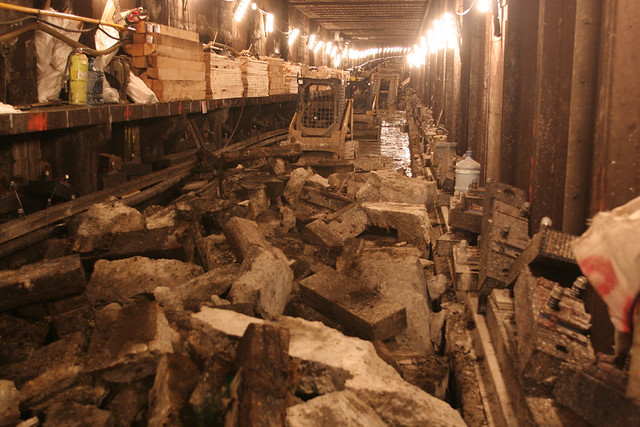As some of the city’s East River crossings remain tolled while others are free, city drivers have engaged in “bridge shopping” in the wake of the recent MTA toll hikes, the city’s Department of Transportation has found. In a recent report, the agency found that traffic on the tolled bridges declined while volume across the free bridges has increased by a corresponding amount. While DOT refused to speculate on the connection between the two, the ties seem rather obvious to me.
The New York Post has the numbers:
Data compiled by the city’s Transportation Department showed that traffic volume on all four of the tolled bridges and tunnels across the East and Harlem rivers fell between 2008 and 2009, while it increased on 10 of the city’s free bridges. The Brooklyn-Battery Tunnel took the biggest hit, losing 4,363 of its customers, or 7.9 percent, during the financially perilous one-year span…
During that same period, the Brooklyn, Manhattan and Williamsburg bridges added a total of 4,246 vehicles to their annual count — nearly the same number that abandoned the Battery Tunnel. Those three bridges, of course, don’t cost a cent.
A similar trend was evident at the tolled Henry Hudson Bridge, where traffic was down by 3.6 percent, or 2,494 vehicles. The free alternative, the Broadway Bridge, saw a corresponding jump of 2,300.
Traffic expert and long-time toll advocate Sam Schwartz bemoaned the environmental impact of the so-called “bridge shoppers.” “It’s really very bad for the environment. They’re polluting a lot, driving extra miles, using more gasoline,” he said while arguing that the free bridges should be tolled — as they were in the early 1900s — in order to encourage efficient driving, reduce congestion and generate more revenue.
Of course, James Vacca, the head of the City Council’s transportation committee and a representative that hails from a district in which car ownership rates is higher than the city average, had a different take. “We may be reaching the point of diminishing returns with the constant toll and fare increases,” he said. “If they keep raising it further, I’m worried about the impact on jobs. The reality is, some people do have to take their cars to work.”
I know Vacca must balance the demands of his car-owning constituents with his role as head of the transportation committee, but his has been and always will be a spurious argument. Those, such as plumbers, electricians and delivery services, who “have to take their cars to work” are in the best position to pass along any tolls or fees to their customers, and anyone who drives in just to pay to to park in Manhattan can afford the East River Bridges. If they can’t, numerous subway lines serve the same areas.
At some point, common sense will overtake a debate built on strawmen, but while our politicians refuse to see the need to reduce congestion while generating revenue, local roads and free bridges will continue to see traffic increase.




